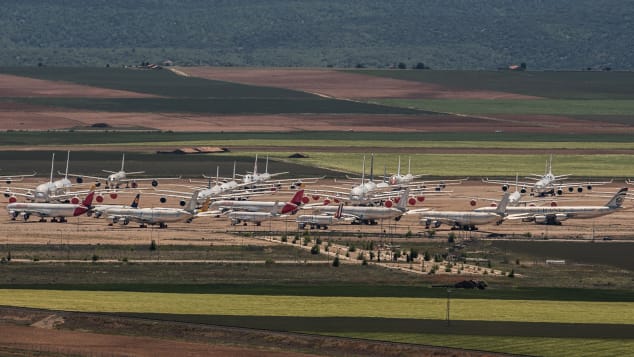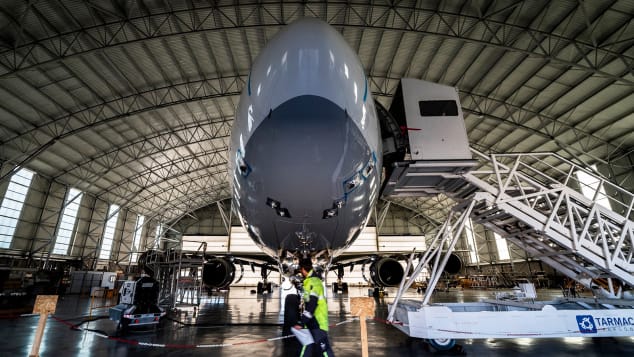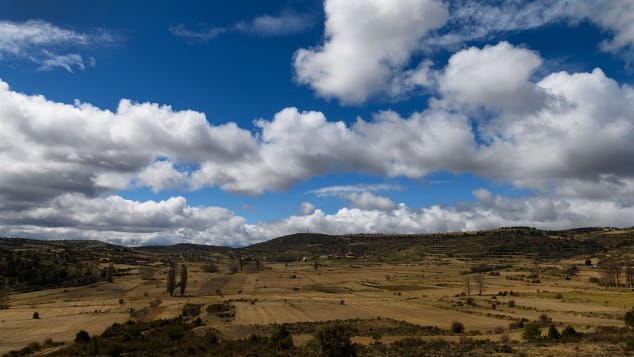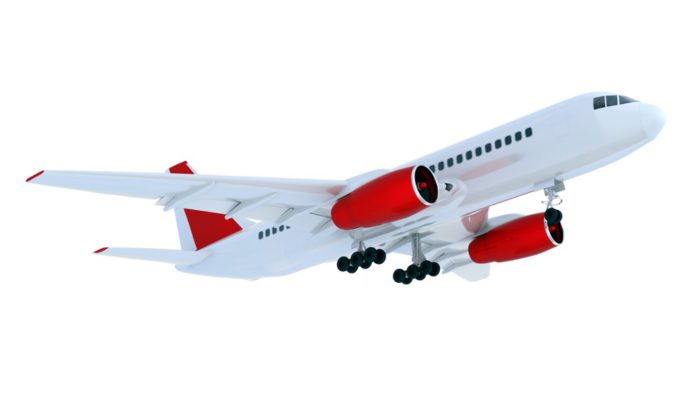The busiest airports in Spain? Madrid and Barcelona spring to mind and, under normal circumstances, they’d be the right answer.
Yet when Aragon’s Teruel Airport recently topped Spain’s airport activity rankings, it became clear these are anything but normal times — but then, Teruel isn’t your typical airport.
The wind-swept steppe in the highlands of eastern Spain is the unlikeliest of settings for a busy airport. After all, we’re talking about one of Europe’s most sparsely populated regions.
Teruel province rarely features in the itineraries of the tens of millions of tourists that typically visit Spain each year. Even among the Spanish, this rural, off-the-beaten path destination retains an aura of mystery, as befits somewhere many have heard about, but few have visited.
It’s not for nothing a local grassroots political organisation, which last year got its first MP elected to the Spanish parliament, chose to name itself “Teruel Existe” (“Teruel Exists”), a mission statement that hopes to place this territory back on the map.

Deep storage
What is certain is that Covid-19, or its aftershocks in the travel sector, has raised Teruel Airport’s profile in the aviation industry.
That’s because the users of Teruel Airport aren’t passengers, but the planes themselves.
The same dry climate that has made this area one of Spain’s ham-producing hubs, with “Teruel ham” having its own protected designation of origin, makes it also a top choice for those airlines that have excess capacity in their fleets.
“The climate in Teruel is suitable for ‘deep storage’, a condition in which the aircraft can remain for a long period of time without major maintenance work and is preserved in the best possible way for a later resumption of operations,” a spokesperson for German flag-carrier Lufthansa tells CNN Travel.

David Ramos/Getty Images
The airport hosts the facilities of Tarmac Aerosave, a French aviation group that offers storage, maintenance and recycling services to the airline industry and manages another two similar sites in the south of France.
At one of them, Tarbes, near the French Pyrenees, the first two A380s to be fully retired from service, both belonging to a German leasing firm, were broken up in late 2019.
With passenger demand plummeting and uncertainty about the future of the travel industry at sky-high levels, quite a few airlines brought forward the dismissal of those four-engined behemoths, and quite a few of them have ended up in Teruel.
Running out of space
One of these airlines is Air France, which has placed in storage 180 aircraft out of a total fleet of 224. Most of these have remained at its French bases in Paris and Toulouse, but a handful of A380s were flown to Teruel prior to the company’s announcement that it was bringing forward their retirement, initially planned for 2022. Sources at Air France confirmed that, as of June 11, the airline had five A380s in Teruel.
There they will find company in “Vienna,” “Zurich” and “Brussels,” the three A380s Lufthansa has flown to the Aragonese airfield. The German carrier is also sending its entire A340-600 fleet to Teruel, where they will be decommissioned over the next two to three months. These aircraft are not expected to return to service for at least one to one and a half years — if ever.
The arrival of so many very large aircraft adds to the already considerable workload at the airport, which has the capacity to store up to 125 at any one time.

David Ramos/Getty Images
Although there have been bursts of activity at Teruel in the past, such as when Transaero, back then Russia’s second largest airline, went bust in 2015 and most of its fleet was sent there, this will be the first time the airport operates at capacity.
Pedro Sáez, Teruel plant director at Tarmac Aerosave, told CNN on June 17 that while the company had 66 aircraft in storage and parking at the airport before the pandemic, it now has 109 — an additional 43 aircraft.
The arrival of some very large aircraft — as many as nine A380s and 40 A340s were at Teruel as of early June — adds to the already considerable workload at the airport, which has the capacity to store up to 125 at any one time.
How planes are maintained
It’s too quick for a planned €24 million ($26.9 million) expansion project, including an aircraft painting facility and a large hangar able to hold two A380s simultaneously, to be of much help.
Airport managers are therefore thinking about how to optimise the existing space. Twenty-five aircraft have already been placed on unpaved land, while employees have been recalled from furlough. This is labor-intensive work since aircraft need specialised care and maintenance during the time they’re in storage.

JOSE JORDAN/STR/AFP via Getty Images
Air France estimates that an aircraft in “active storage,” that is for a period of between one and three months, requires some 150 hours of work in three phases.
There is an initial preparatory stage when the engines, air vents and other key areas are protected, liquids drained and wings and landing gear lubricated.
This is followed by a phase of recurrent inspections, which involve also moving the aircraft periodically to reduce pressure on tires and restarting engines and power regularly.

PIERRE-PHILIPPE MARCOU/AFP via Getty Images
Whenever it’s time to bring the aircraft back to service, the procedures to resume operational life may take another two days, removing protections and conducting additional checks.
Ironically, the very same travel restrictions that have boosted activity levels at airports like Teruel act also as a limiting factor.
Just as has happened in the cruise industry, crews flying aircraft to storage sites risk getting stranded or, at the very best, face an inconvenient slog to get back home.

